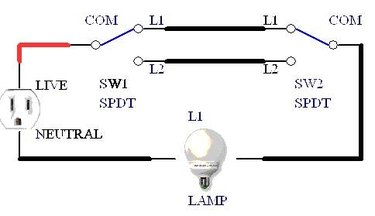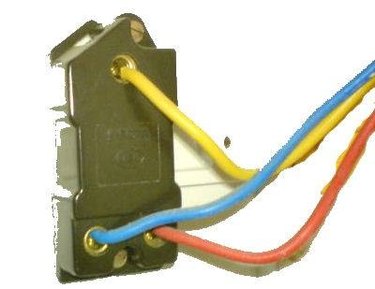
Application

A two-way light switch requires a three-way cable (three wires plus ground--four conductors in all) to be run in order for the light to be switched from any station. This means that at any time, either switch may be upside-down so that it's on in the down position or off in the up position. The wiring in the wall will have to be re-wired if there is only two-way cable in existence. Adding another wire to the existing installation will not end up being as easy as pulling through the correct cable to replace the old one.
Wiring
Video of the Day

The third wire provides for the ability to switch from either end of the cable. The switches used in each location must be two-way switches, providing a choice between two different directions for the electric current. This is the wiring behind the lighting circuits that save time, like the light switch in the kitchen that switches the light in the garage off, and the same circuit can be switched off at the front end of the garage, saving you having to return to the kitchen. Another application would be the light on the stairway on different floors, saving you from having to go up or downstairs to get the switch.
Video of the Day
How it works
Two of the three wires carry current to either end of the installation. The third provides the redundant switching at either end. The ground wire is common to the entire installation and must not be used for anything other than grounding at either end. Color-coding is essential. The red wire is the "traveler" wire and is the one that carries the switched current from one switch to the other. The two black cables are the "hot" (live) cables that have the power switched into the circuit and the green cable is the ground that is wired between all the devices.